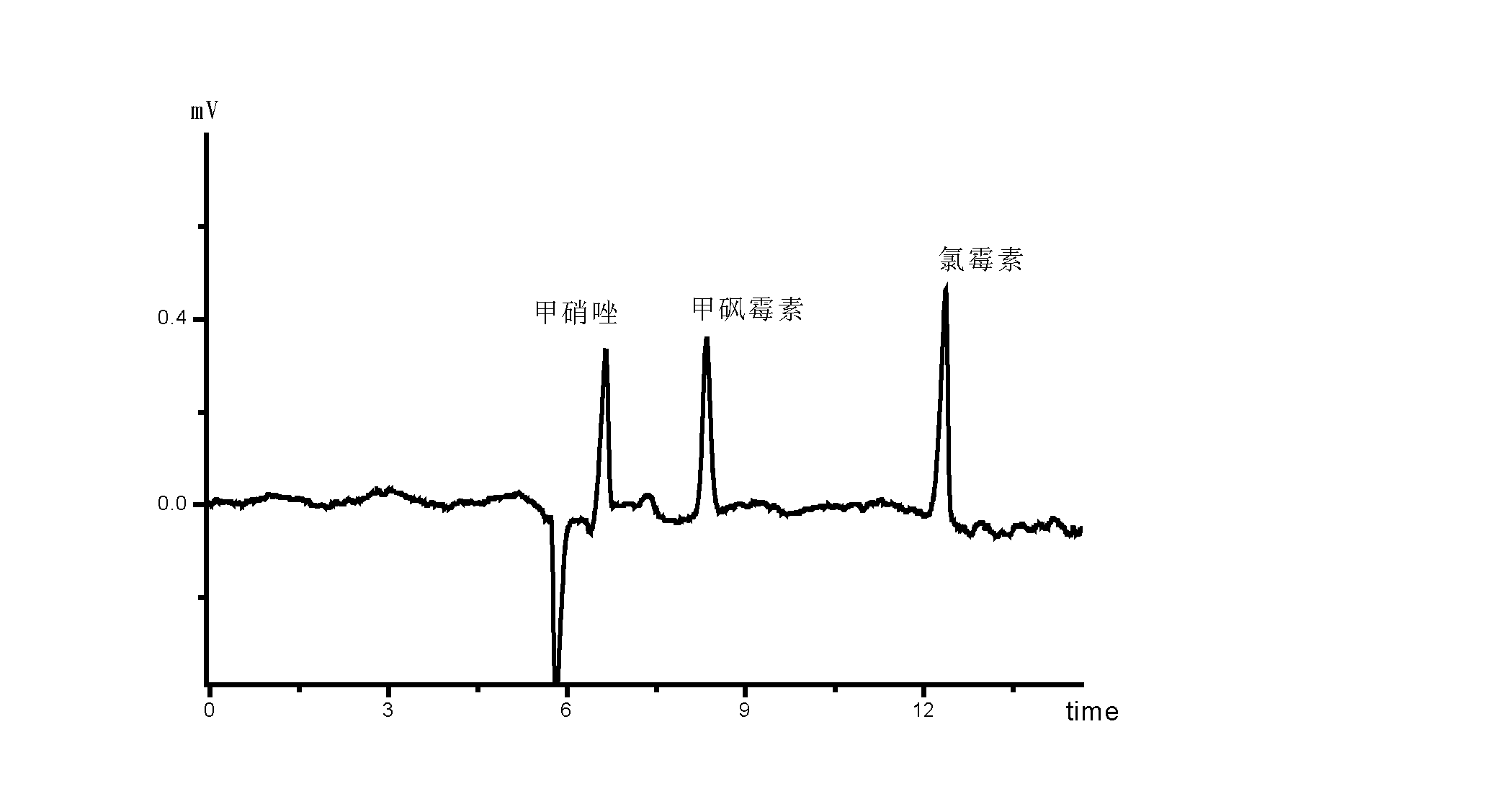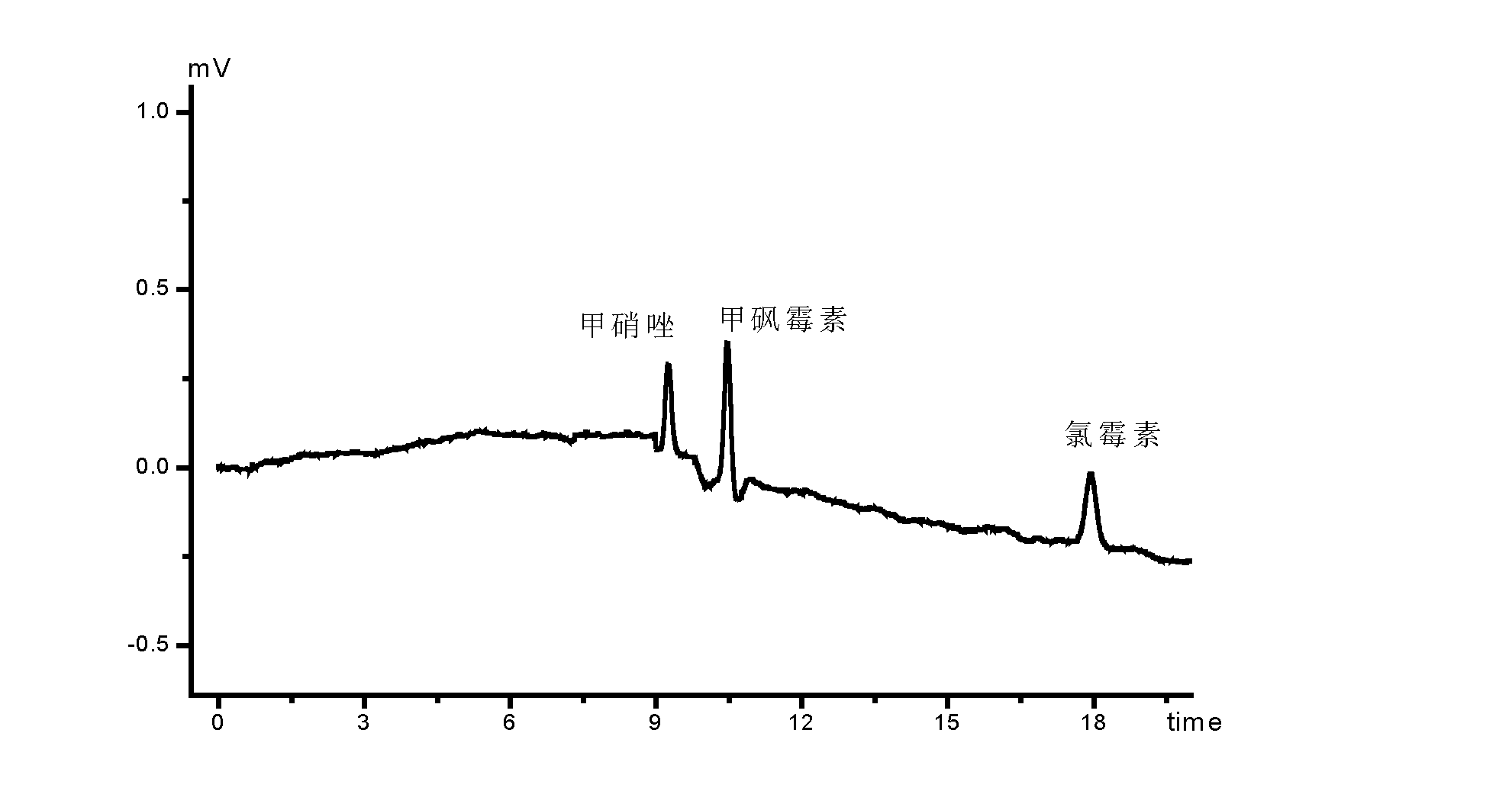Method for detecting chloramphenicol, thiamphenicol, metronidazole residuals in prawns by using pressurized capillary electrochromatographic instrument
A technology of capillary electrochromatography and thiamphenicol, which is applied to instruments, measuring devices, scientific instruments, etc., can solve the problems of long analysis time, difficult to configure instruments, and low sensitivity of liquid chromatography, and achieves high sensitivity and detection cost. Low, low consumption effect
- Summary
- Abstract
- Description
- Claims
- Application Information
AI Technical Summary
Problems solved by technology
Method used
Image
Examples
Embodiment Construction
[0022] The present invention will be further described in detail below in conjunction with the accompanying drawings and embodiments.
[0023] A method for detecting chloramphenicol, thiamphenicol, and metronidazole residues in prawns by pressurized capillary electrochromatography, the steps are:
[0024] 1. Sample preparation: Cut the muscle tissue samples of prawns with their heads removed, cut them into pieces with scissors, homogenize them, and store them in a freezer;
[0025] 2. Sample pretreatment:
[0026] Thaw the sample, accurately weigh 2±0.01g (accurate to 0.01g) homogeneous sample and place it in a 50mL centrifuge tube, add 10mL of ethyl acetate, mix well with a vortex mixer for 5min, centrifuge at 4000r / min for 10min, collect For the supernatant, add 10 mL of ethyl acetate to the original centrifuge tube to repeat the extraction once, and combine the two supernatants. After adding 15 mL of n-hexane to degrease twice, the solution was rotary evaporated to drynes...
PUM
| Property | Measurement | Unit |
|---|---|---|
| The inside diameter of | aaaaa | aaaaa |
Abstract
Description
Claims
Application Information
 Login to View More
Login to View More - R&D
- Intellectual Property
- Life Sciences
- Materials
- Tech Scout
- Unparalleled Data Quality
- Higher Quality Content
- 60% Fewer Hallucinations
Browse by: Latest US Patents, China's latest patents, Technical Efficacy Thesaurus, Application Domain, Technology Topic, Popular Technical Reports.
© 2025 PatSnap. All rights reserved.Legal|Privacy policy|Modern Slavery Act Transparency Statement|Sitemap|About US| Contact US: help@patsnap.com



